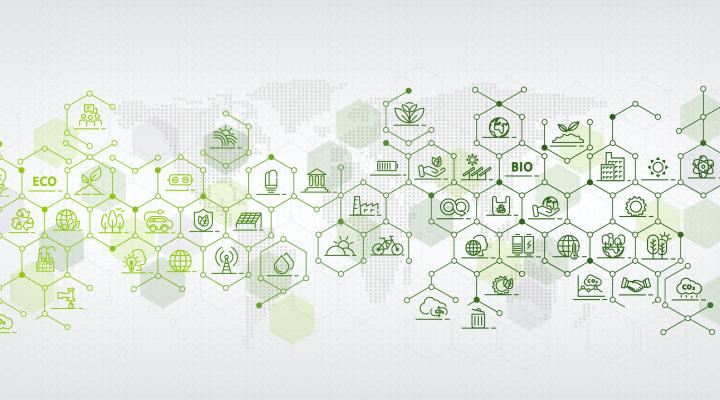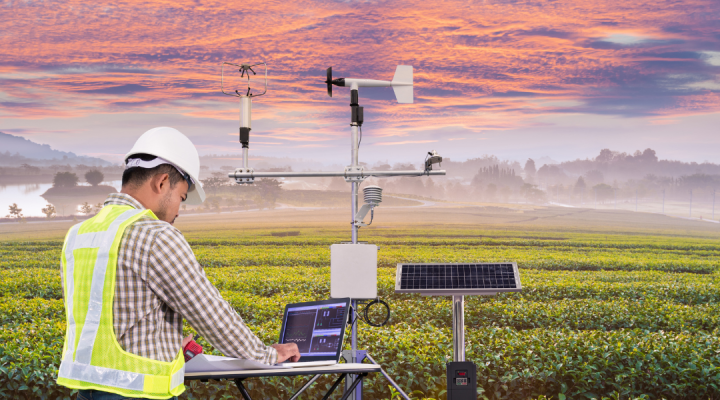As an accounting professor my background is on the role of disclosure in capital markets. In the early stage of my career disclosure was traditionally viewed in purely financial terms but given climate change and resource depletion, my work today has to be much broader and centre around full disclosure.
So in recent years I have been devising best practise to ensure firm are fully transparent and are capturing the carbon footprint of their products all the way through their supply chains. Given the scale of the climate crisis it is hoped that by extending beyond profit and loss to fully capture the cost to the environment, such disclosures should incentivise capital markets to reallocate capital to more sustainable companies and green innovation.
But it isn’t enough to instil change on the side of the producers if it isn’t matched by a parallel change on the side of the consumers.
The role of consumers
Consumers have a vital role to play in the transition to a lower carbon economy, they have the potential to steer markets, shape corporate behaviours, and are emerging as a formidable force for change. Yet not much is known about what drives consumer choice for green product options and what prevents them from adopting climate-friendly behaviour.
The vast majority of consumers internationally seem to agree that climate change is an important problem and that their country should take actions to fight climate change. Yet, despite recognising the threat from climate change and declaring they care about the environment, most consumers are not changing their behaviour.
So in a new research initiative we are focussing on addressing the gap between growing consumer awareness of climate change and the lack of widespread changes in consumer behaviour - a phenomenon known as the ‘say-do’ gap. Through our partnership with Investcorp, a leading global investment manager specialising in alternative investments, and working in in collaboration with researchers at the Digital Data Design Institute at Harvard we are aiming to generate new insights into consumer attitudes towards climate change for business, policy makers, academia and the broad investor community.

What we know so far
Broadly speaking there are three key factors behind consumers reluctance to buy climate-friendly products.

Trust - consumers are often sceptical about companies’ green credentials. Green adverts and recycling logos often illicit a suspicion that the product will end up on a landfill anyway. ‘Greenwashing’ has become a regular part of our lexicon.
Performance - as firms innovate to come out with greener products there is often an initial reaction that the quality is not at the same level as the non-green option.
Price - consumers are very sensitive to price, even more so with the increase in the cost of living. The green option is often more expensive but as technology is becoming more widespread and scale comes into play, hopefully prices will come down, making the product more attractive to consumers.
But consumers are also influenced by their own values – personal, social, political – perceptions and biases. This is very much the case in terms of climate behaviour.
- For example if you are not directly affected by extreme weather then the need to change your behaviour might seem very distant.
- Then there is confirmation bias when you have a certain set of values and understanding so we selectively choose the one that confirms our preconceptions about the problem.
- If you were given the climate option from the outset, in whatever sphere, sector or product, and you had to essentially opt out or deselect that climate option then the majority of people would not deselect. But it is the converse for the most part.
- At the moment the onus is essentially on the consumer to do the research on green versus non-green consumer behaviours. Companies can and should do a lot more to make decision making easier.

What's next?
Research to date has made significant advances to our understanding of consumer attitudes and behaviour with respect to climate change. But to really tackle the ‘say-do’ gap we need to dig much deeper and our white paper identifies six areas below where further research is needed to understand the drivers, barriers, and nuances of consumer choices in the context of climate change.
- Consumer engagement: The consumer's role in addressing climate change is increasingly recognised as pivotal. While efforts have primarily focused on businesses and policy, understanding consumer behaviour and attitudes is essential to achieving significant emissions reductions.
- Complexity of consumer attitudes: Consumer attitudes toward climate change are multifaceted and influenced by personal, cultural, and social factors among others. This complexity highlights the need for rigorous research to understand different consumer perspectives and motivations and is essential for creating meaningful change.
- Attitude-behaviour gap: The gap between consumers' attitudes and their actual behaviour is a significant challenge. Understanding the reasons behind this gap is crucial for developing strategies to bridge it.
- Barriers to adoption: Barriers such as price, perceived performance, trust, and effort pose substantial challenges to green adoption. Overcoming these barriers will require further research into the role of communication, product experiences, and verification.
- Trust matters: Trust in companies' environmental claims significantly influences consumer decisions. Consumer trust can be undermined by greenwashing, making it imperative for companies to be transparent and authentic in their sustainability efforts.
- Willingness to pay: While some consumers express a willingness to pay more for green product attributes, more research is needed to identify factors that influence consumption decisions and understand the extent to which this willingness varies across product categories and geographies.
We look forward to unpacking some of the barriers that prevent consumers from becoming greener in their consumption in our forthcoming, large-scale international survey. This will in turn inform business about the necessary steps to support customers in the green transition, and to inform investors about future consumption trends to channel funds to the most promising transition investment opportunities. One thing is already clear, companies need to be more transparent with the carbon footprint of their products supporting consumers to make informed choices.
It is a circular loop where:
- greater transparency in reporting drives greater investment
- greater investment means companies can invest more in green technology
- the investment means improvement in the products and builds greater trust on the part of the consumer
- an increase in consumption in turn proves the value in green investment.
The findings that come from our work we hope will make it easier to be green across the board for producers, investors and consumers.
Background
The White Paper, Green Hearts to Green Carts: Bridging the Say-Do Gap for Climate Conscious Consumption, is authored by Amir Amel-Zadeh and Qiaoye Yu. Amir is the Director of the Oxford Initiative on Rethinking Performance and Qiaoye is the Oxford-HEC Montréal Research Fellow in Sustainability at Saïd Business School. Please see the full paper for references.
Amir discussed the research project and consumers sentiment towards climate change in a recent interview with Investcorp.




